Biophytum sensitivum is a gorgeous little miniature palm-like plant species that’s perfect for small containers and those looking to create a tropical jungle feel.
Native to wetland areas of India and Southeast Asia, it’s commonly found in riparian areas near streams and waterfalls, so you can expect this moisture-loving plant to thrive under terrarium conditions.
With delicate branches radiating out from a central crown and a single woody stem, it’s truly like a little palm tree!
The name “sensitivum” comes from the way that the leaves fold downwards in response to touch and at night for protection. Truly, a lovely little feature plant for a terrarium.
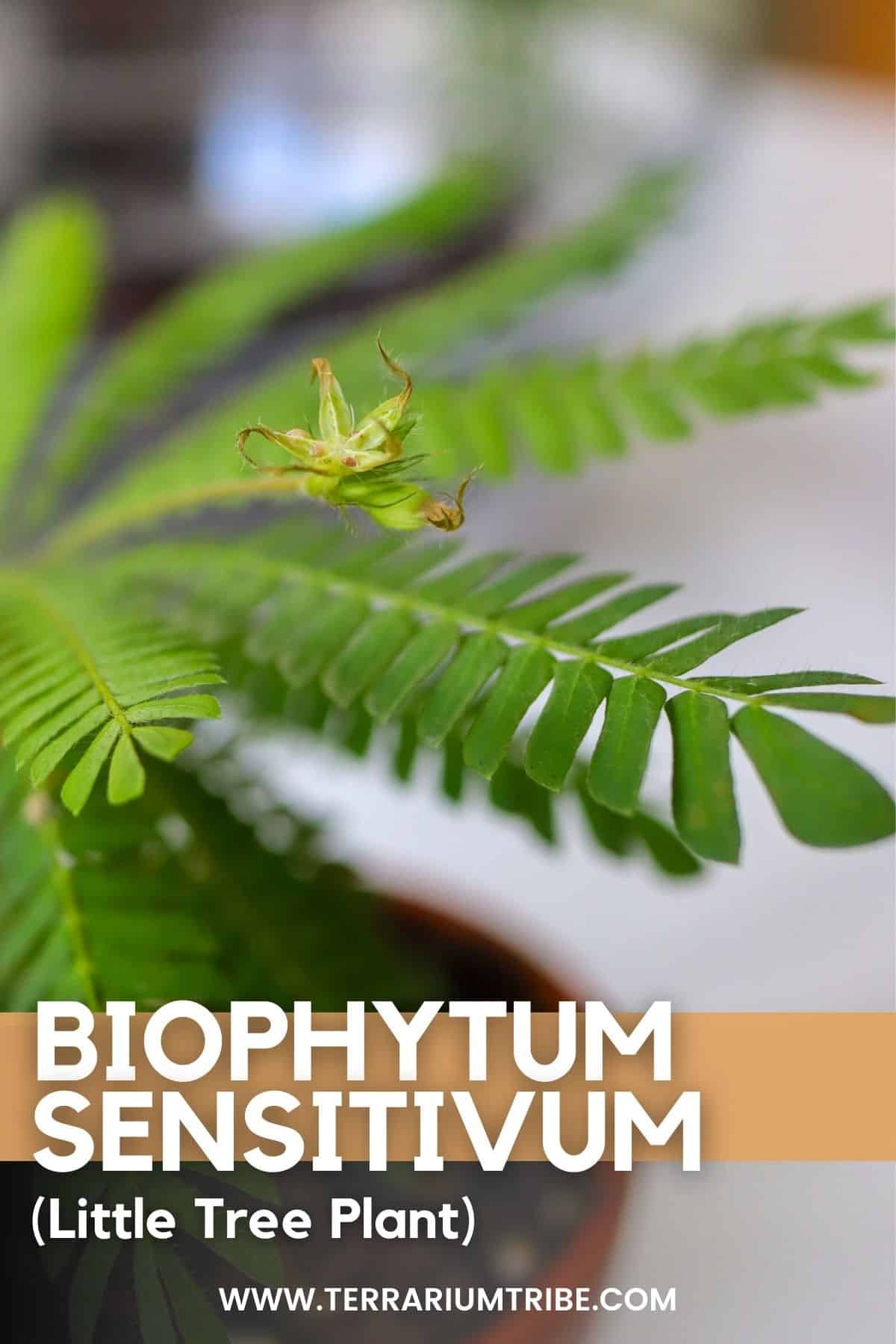
Where to Buy Biophytum sensitivum
See the links below to purchase from reputable terrarium plant shops and marketplaces (may include affiliate links).
Biophytum sensitivum Care & Growth
| Plant Type | Foliage |
| Lighting | Medium – high indirect light |
| Temperature | 60-80°F (15-26°C) |
| Watering | Consistently moist |
| Humidity | High humidity (60-90%) |
| Growth | 3-4 inches |
Lighting
Naturally found in shaded areas, Biophytum sensitivum requires minimal lighting to thrive.
I mean, this miniature palm tree only stands a few inches tall from the ground, so it’s not used to receiving much light down there is it?
So, as is typical with tropical understory plants, bright indirect light is best.
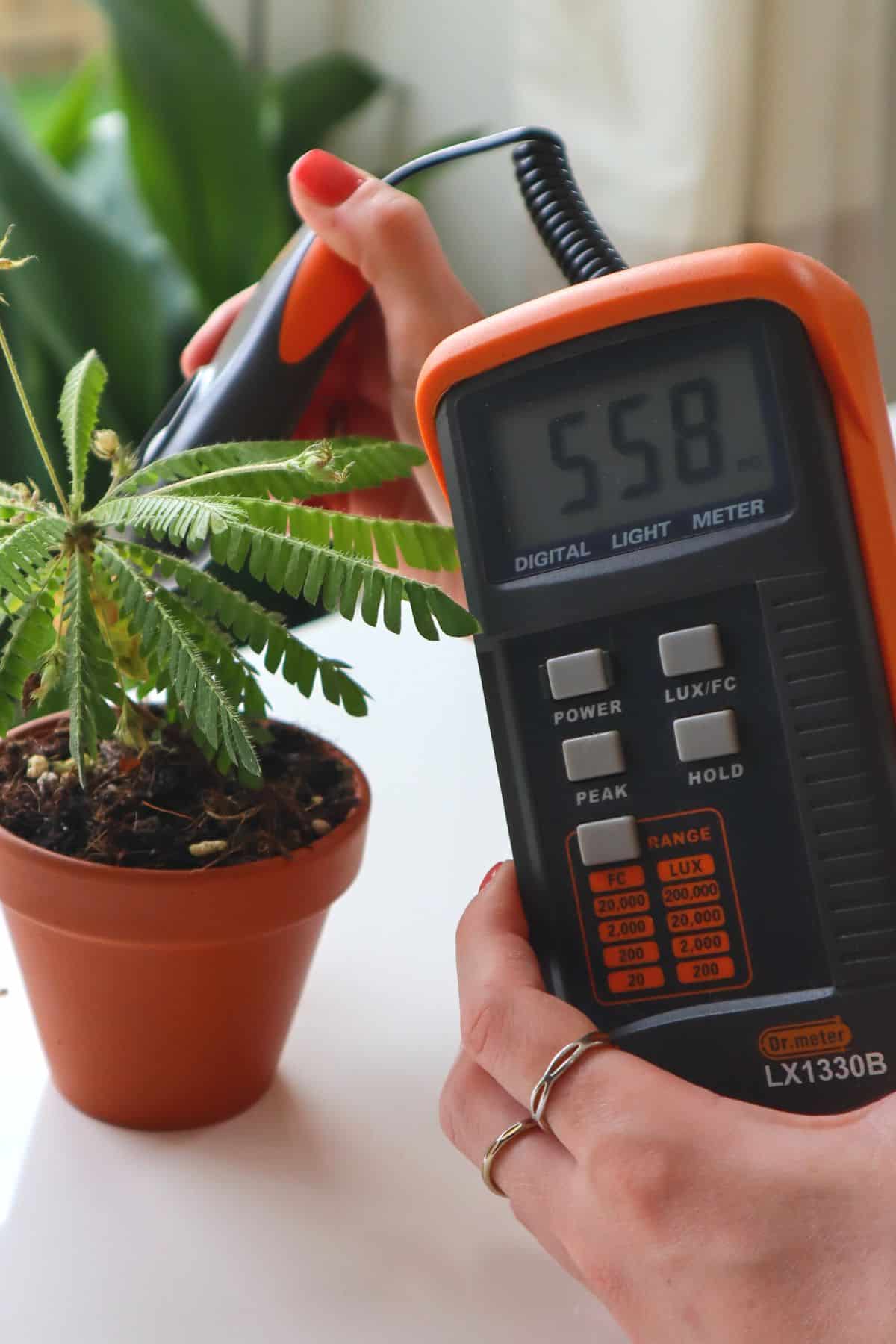
That said, it’ll handle medium light just fine, too. Just make sure to keep it out of direct sunlight to protect the delicate leaves.
Watering
As a plant species native to wetlands and riparian areas, Biophytum sensitivum loves to be consistently moist.
In fact, probably even more so than most other closed terrarium plants – so try to pair it with other moisture-loving species, e.g., tropical ferns.
Pro Tip: When watering this plant in a terrarium, if possible, I’d recommend trying to avoid watering its leaves directly. It’s a sensitive plant after all, and it can end up shriveling up (and looking a bit sad) if it can’t dry the droplets off its leaves.
In the pot, you may have a harder time keeping up with its moisture requirements (especially seeing as they’re probably in a tiny pot like ours). I’d definitely recommend growing it in a pot with a drainage hole.
That way you can water generously without any worry of overdoing it.
Substrate
Biophytum sensitivum needs a substrate with excellent water retention in order to mimic its natural wetland environment.
Any solid tropical mix should do the job, but substrates containing lots of sphagnum moss or coco coir can help to retain maximum moisture around their roots. I like to add earthworm castings as a peat-free fertilizer, too.
Something like an ABG mix is a good starting point.
👉 Our tropical terrarium substrate mix is a natural fit here too.
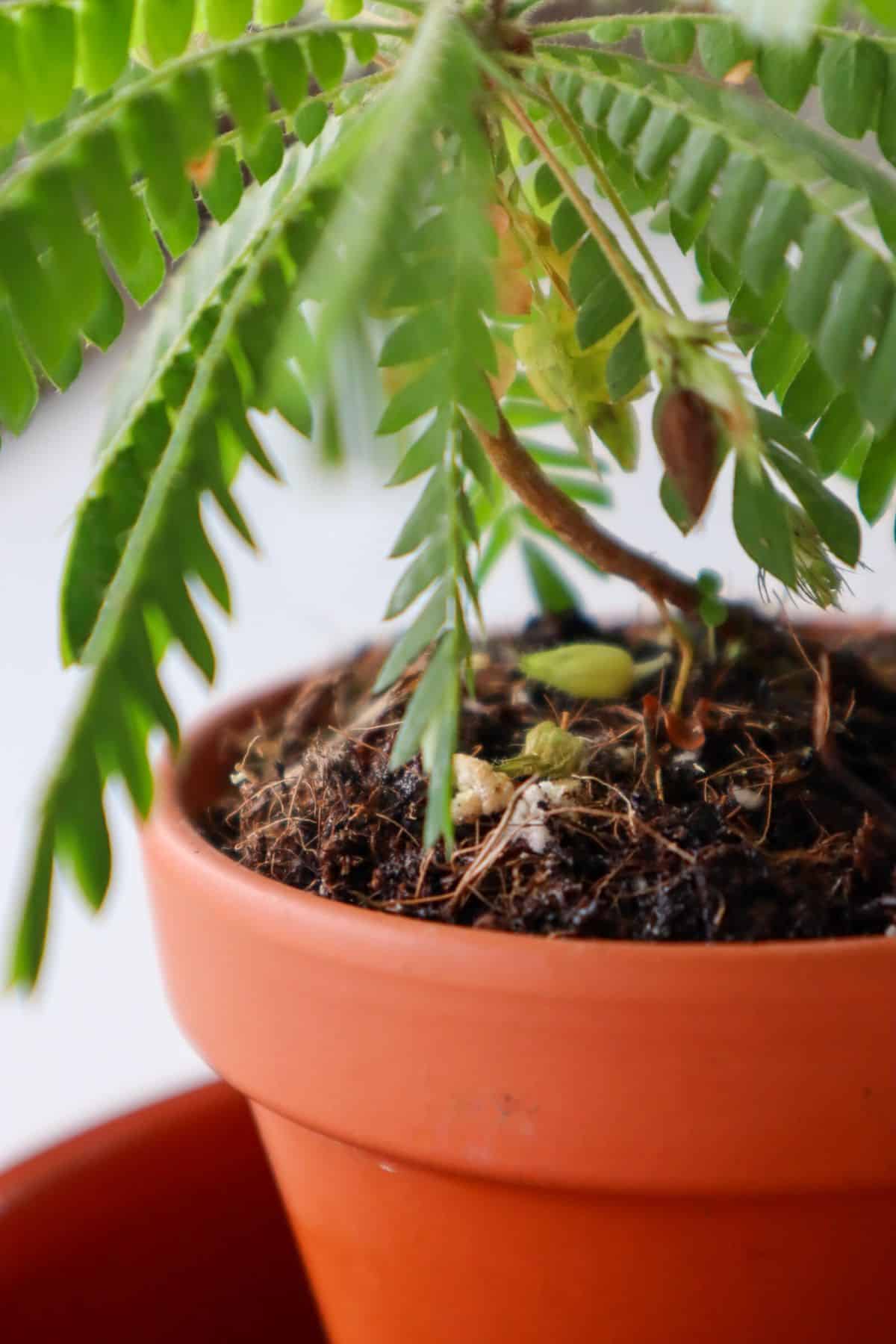
Temperature & Humidity
The Little Tree Plant needs a consistently warm temperature and humidity to grow.
After all, this sensitive plant lives up to its name, and it’s more than capable of taking a sudden turn for the worse if caught in a cold or dry draft.
Ideally, keep above 15°C and 50% humidity to keep this plant happy (which is super easy to achieve in a tropical terrarium).
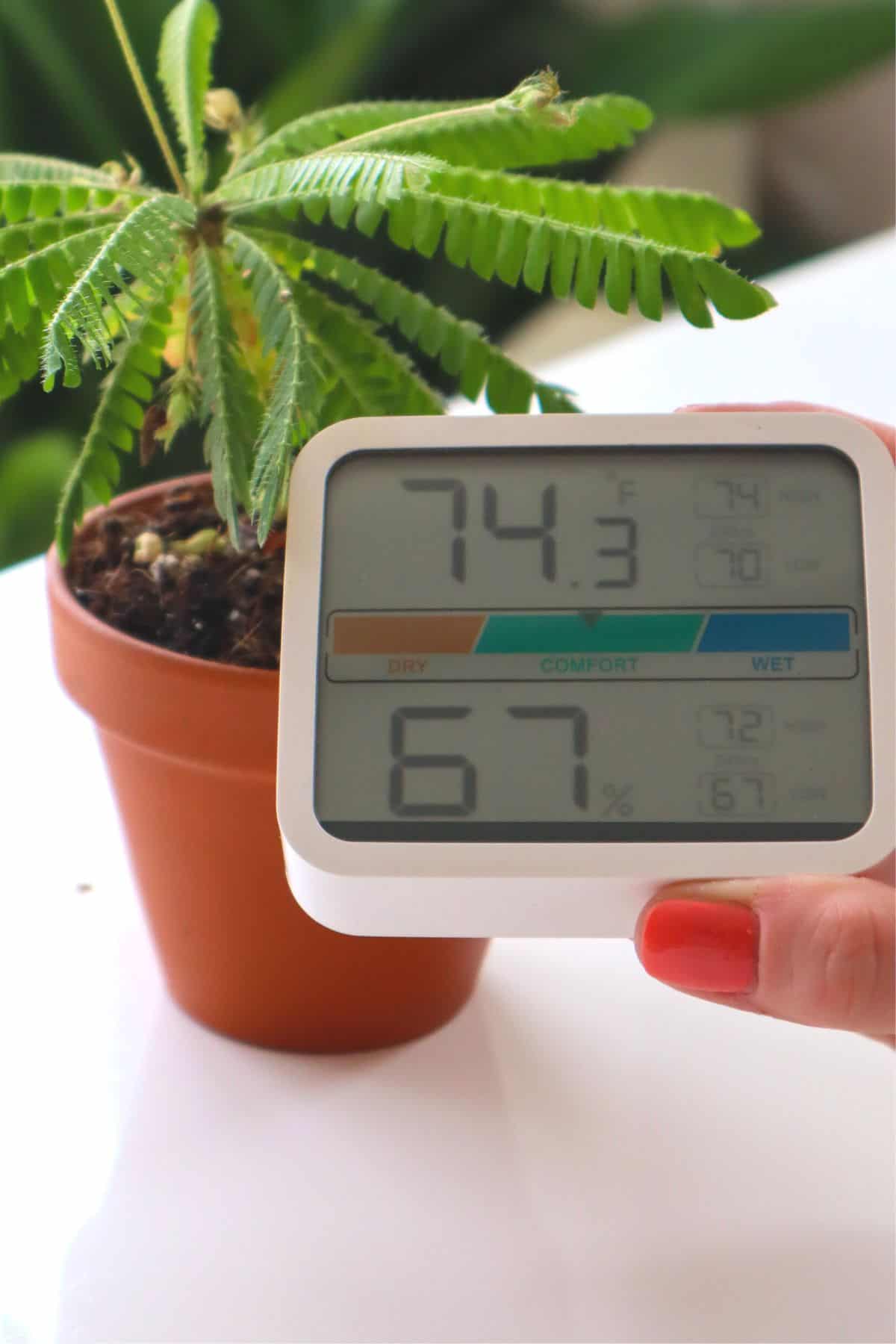
Growth
Being a true miniature plant, there’s not a great deal of growth to be had with Biophytum sensitivum.
At their mature height, they won’t grow above a few inches tall or wide, so you’ll never have to trim them. This makes them perfect for terrariums of all sizes; I really do love them.
If you look after them well, you may be rewarded periodically throughout the year with yellow, pink, and cream-coloured flowers.
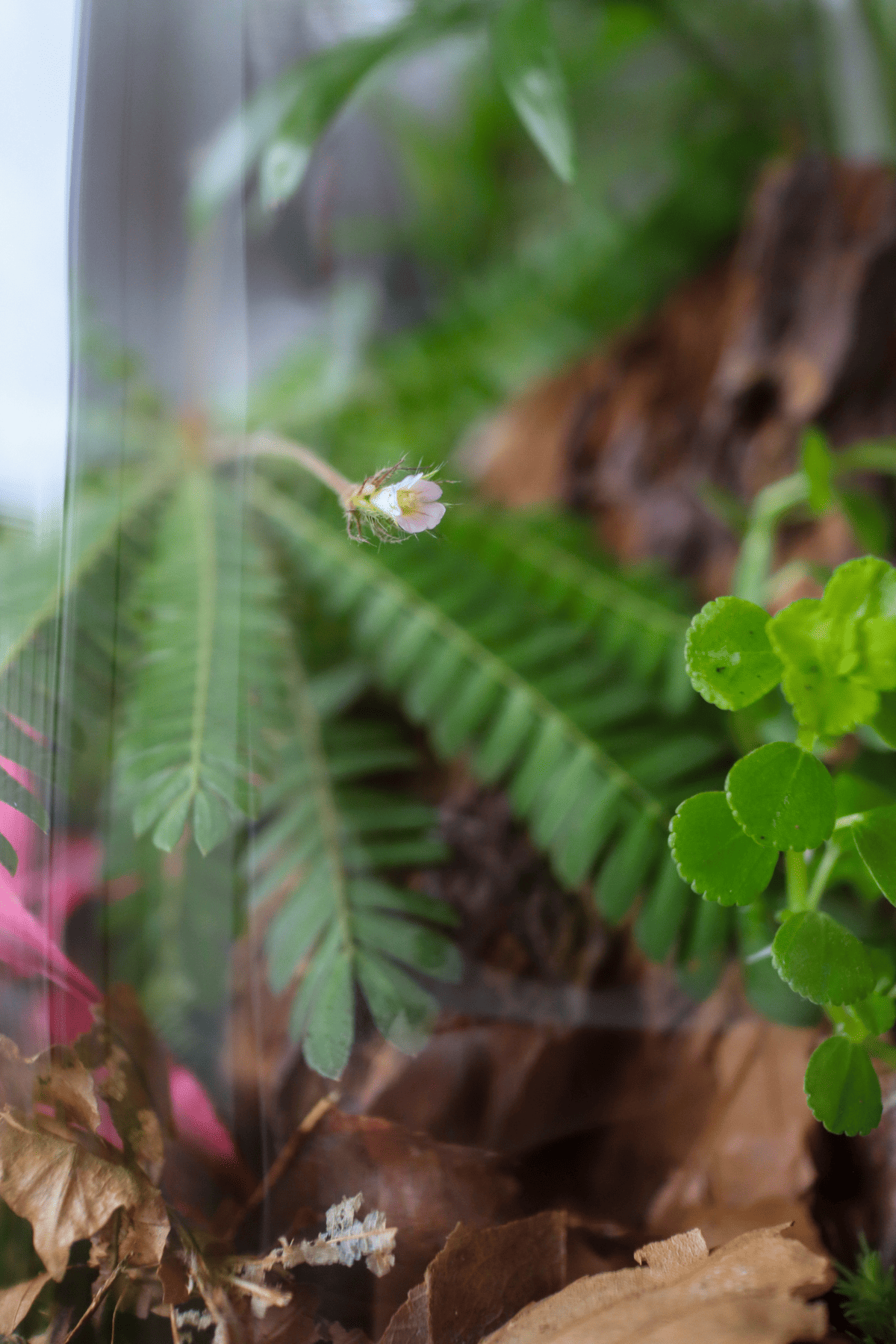
It’s an annual plant, so in the wild, they typically wouldn’t last longer than a year. But in a terrarium, they’ll last plenty longer than that (especially if you remove the flowers early when you see them).
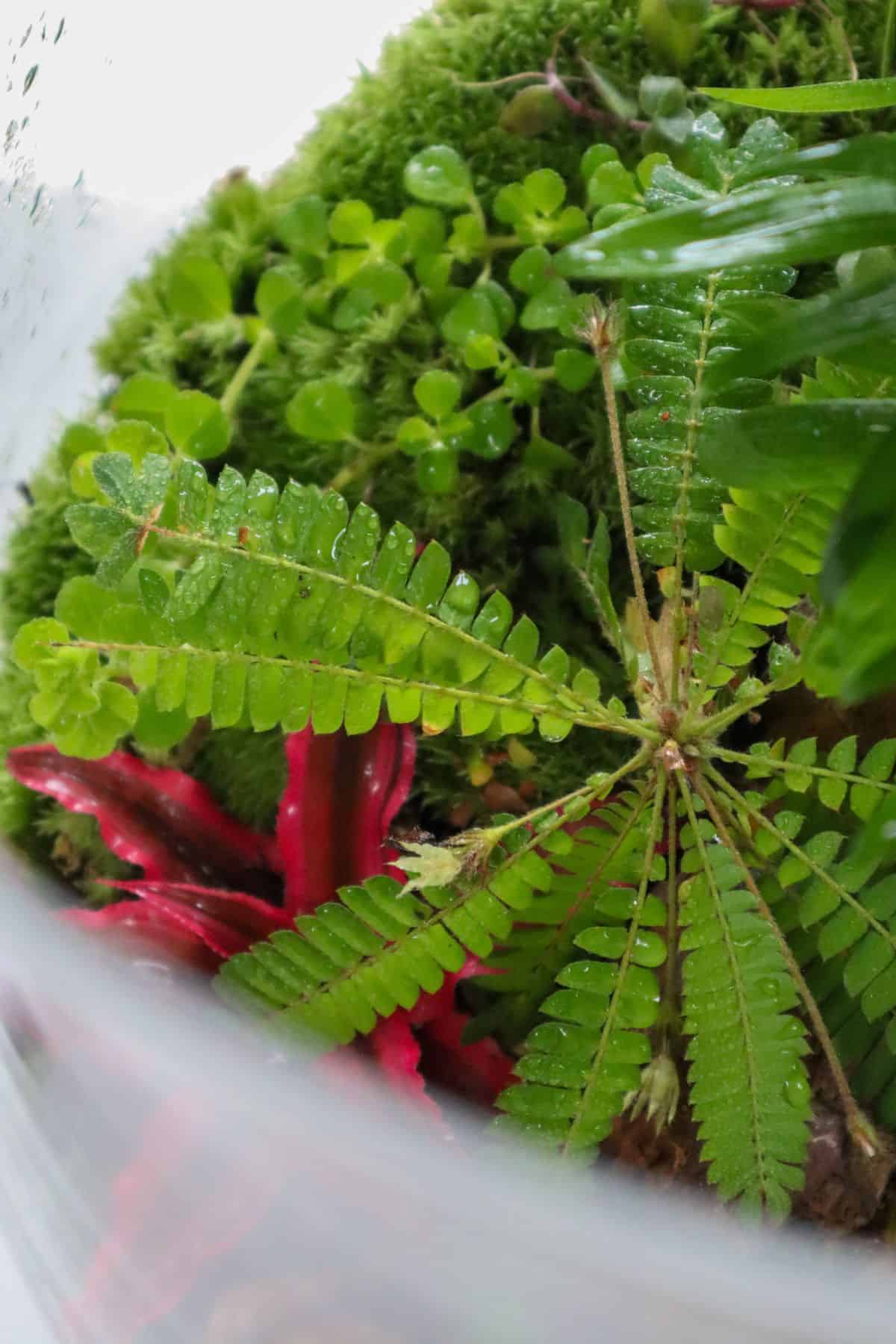
Propagation
Biophytum sensitivum is one of the few terrarium plants where harvesting and germinating seeds is the easiest practice.
You only need the one plant for reproduction, and you’ll see the seed pod open up in a star-like shape before they’re released. Our plant produced a few of these pods.
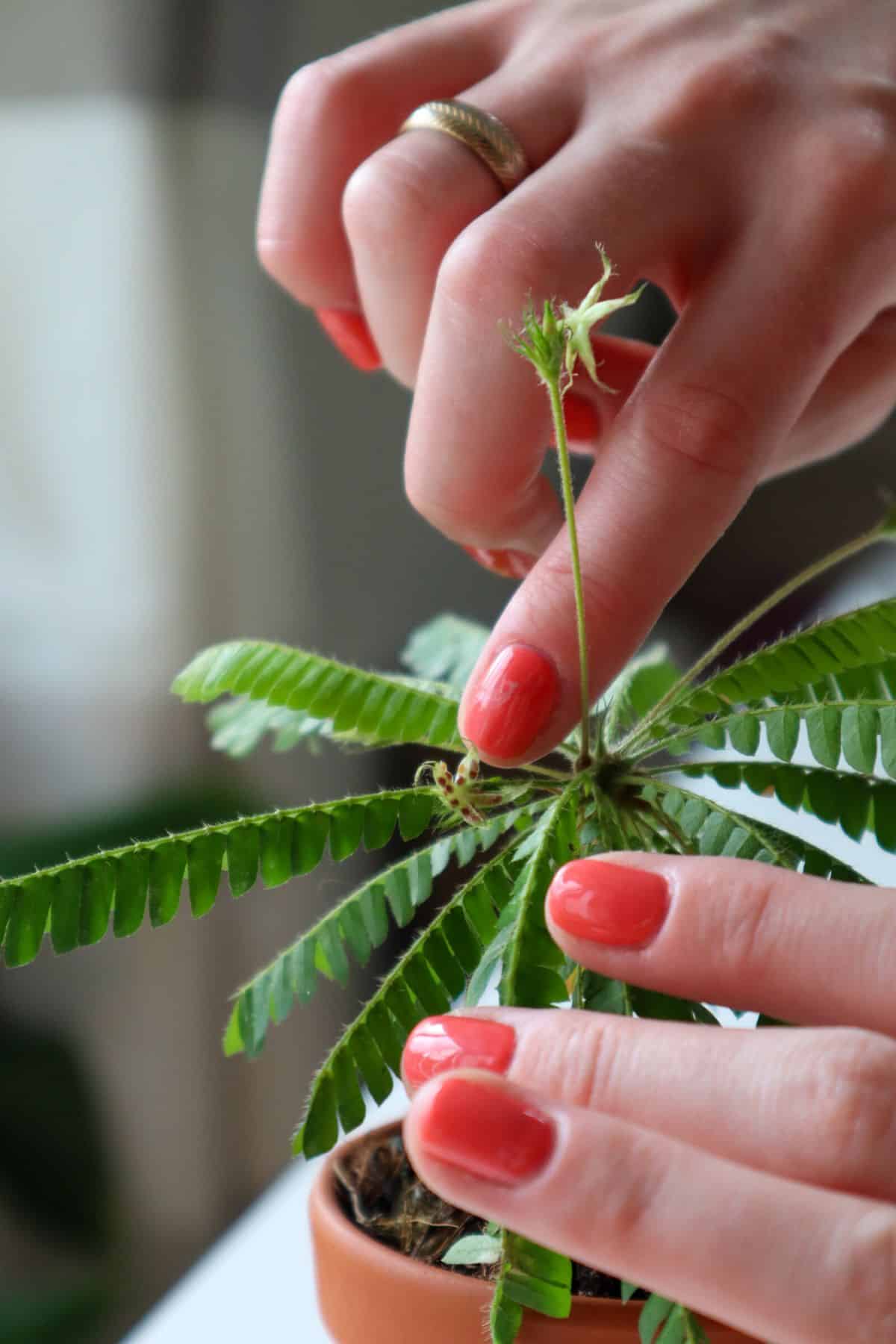
When they’re ready, you should be able to gently tease out the spores. These can be easily germinated in moist soil, in fresh pots, or in terrariums. It should be as simple as laying the spores on top or gently covering them.
But, I prefer to let them do their own thing on their own. What can I say? I like surprises.
Varieties & Similar Plants
The Biophytum genus has over 50 different species, a few of which are suitable for terrariums, including Biophytum sp. ‘Lime’ and Biophytum sp. ‘Ecuador’.
The common name “Sensitive Plant” is also often associated with Mimosa pudica which also folds up in response to touch. Though they’re different plants, both are good terrarium species.
Common Problems
As you’d expect from a plant with ‘sensitivum’ in the name, this plant is particularly delicate, so handle as carefully as possible when planting.
If the plant stops reacting to touch or starts dropping leaves, it’s an early sign that it’s stressed.
Our plant really didn’t like it when we washed its roots. It dropped a bunch of leaves and took a day or so before it opened up again and started looking normal.
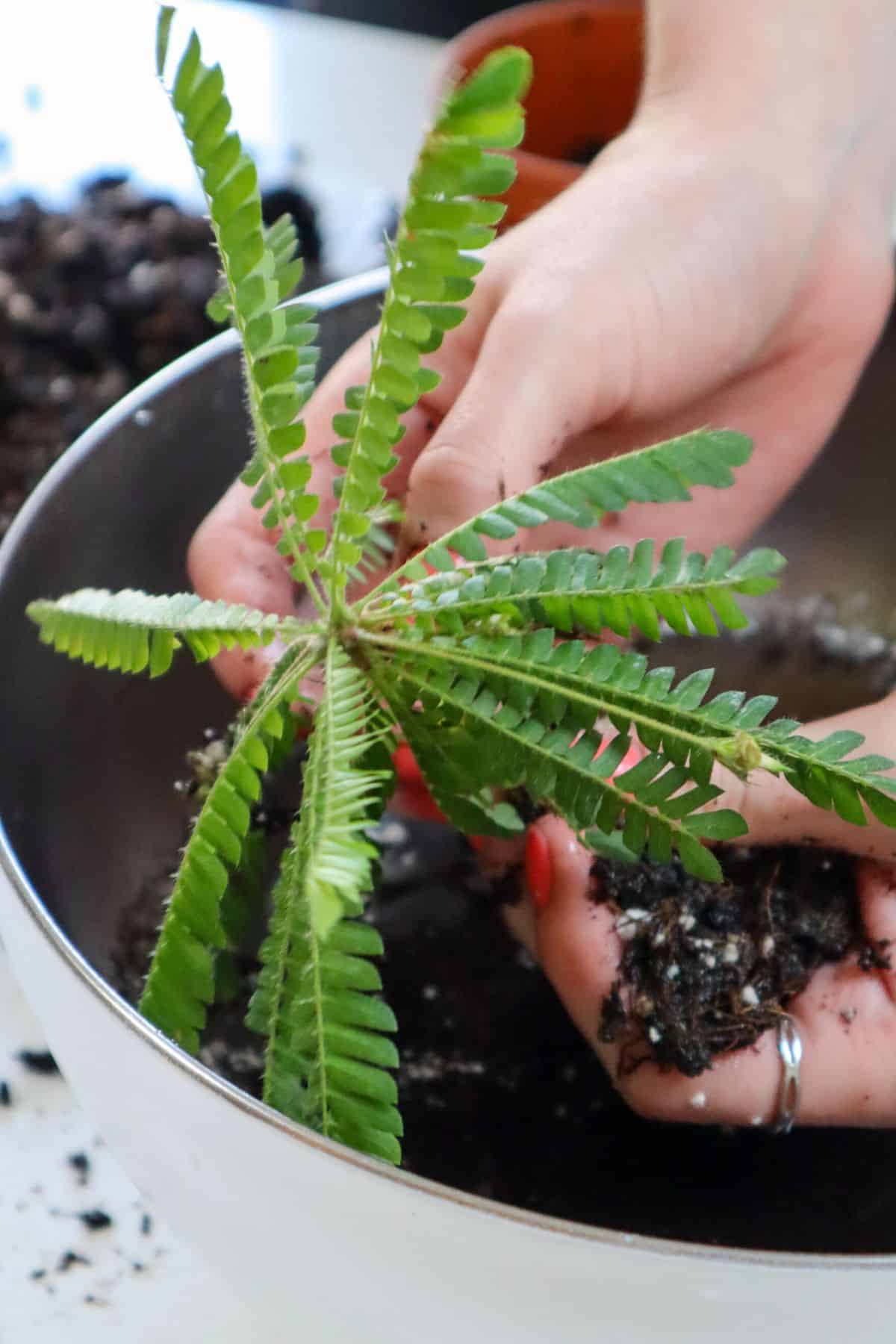
So don’t be too concerned if your plant looks a bit worse for wear after repotting or putting it into a terrarium. It’ll most likely bounce back in a short time.
